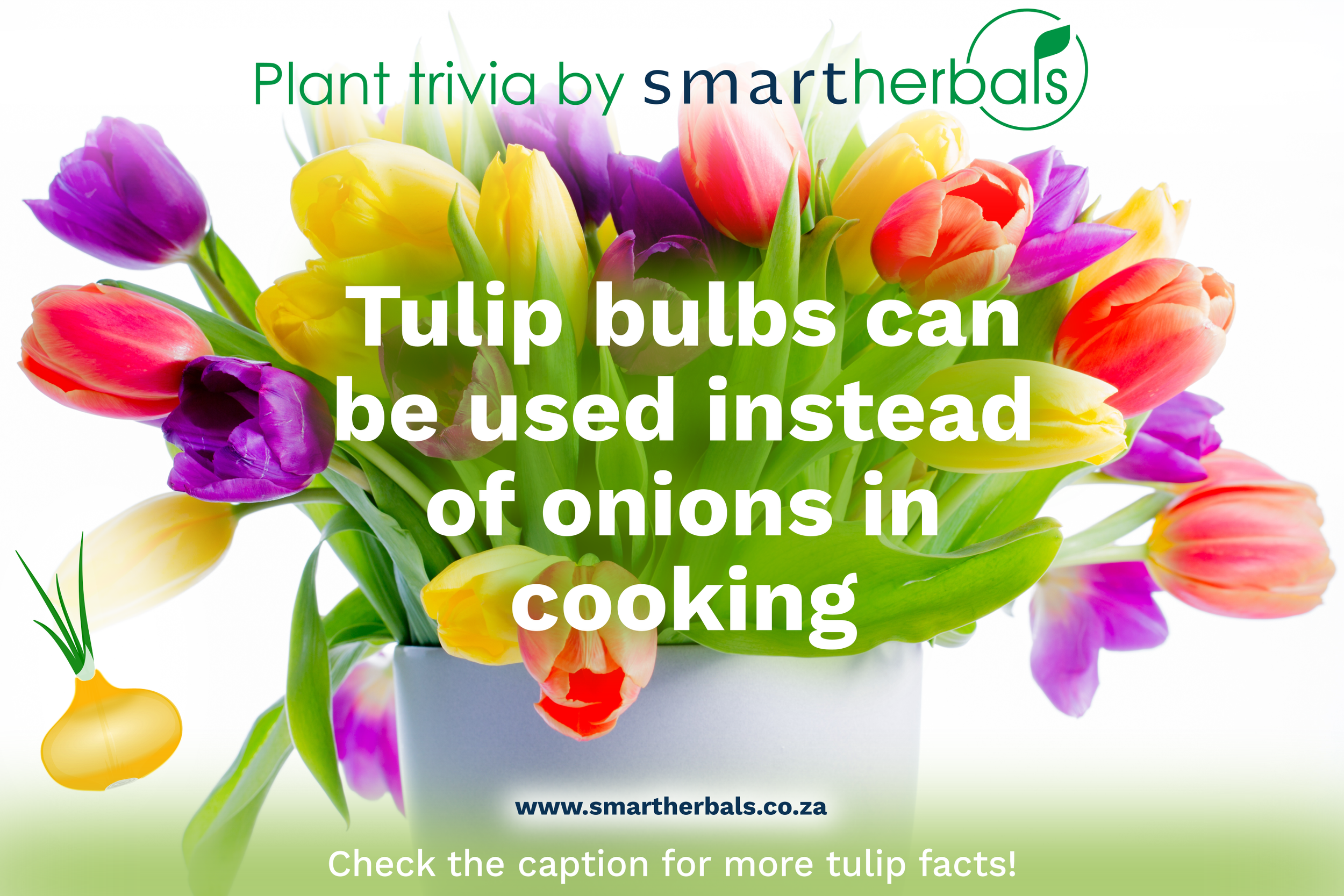Tulip
More Tulip Trivia by SmartHerbals:
Some colour compounds in tulips have antimicrobial properties without being toxic to human cells.
Tulips are native to Central Asia - they were brought to Europe by the ambassador for the Holy Roman Emperor Ferdinand I, and eventually to Leiden in the Netherlands.
The “Holy Grail” of tulip breeding is to produce true blue and black flowers.
Tulip flowers can vary quite dramatically, from the classic cup/bowl-shapes to pointy or fluffy flowers.
In 1636-1637, ‘tulip mania’ gripped the Netherlands - probably since tulips infected with “tulip breaking virus” change the colour of the flowers in interesting and beautiful ways.
Around 13,000 hectares are used worldwide to cultivate tulips, with most of this in the Netherlands.
Since tulips form bulbs, they can be used instead of onions, and were used as food during the WW2 famine in the Netherlands.
Sources:
Sources: Sagdic O, et al. (2013) Cytotoxic and bioactive properties of different color tulip flowers and degradation kinetic of tulip flower anthocyanins. Food and Chemical Toxicology. 58:432-439. doi: 10.1016/j.fct.2013.05.021.
Orlikowska et al. (2018) Tulip. In: Van Huylenbroeck, J. (eds) Ornamental Crops. Handbook of Plant Breeding, vol 11. Springer, Cham. doi: 10.1007/978-3-319-90698-0_28
Ode à la Rose - Complete Guide to edible Flowers. https://www.odealarose.com/blog/complete-guide-edible-flowers/a-to-z-guide-edible-flowers/tulip-tulipa-gesnerian/
Image: Adobe Stock - Gorilla



